Description
Perhaps the rarest and earliest of all the true Scottish basket-hilted swords is the so-called
“wheel pommel”, dating to the late 16th and early17th C. This type is somewhat crudely
fashioned of flat rectangular iron bars coming together, but not connected to, a groove at
the bottom of the distinctive wheel-shaped iron pommel with integral button. Small
rectangular plates with rounded corners joining two pairs of bars on each side of the
guard, the forerunner of the larger decorated plates on nearly all of the later traditional
Scottish basket hilt designs. Some of the openings are filled with thin solid iron plates
sprung into shallow grooves in the bars. Very few examples known to survive in any
condition and most show considerable wear and use. This example features an upturned
curved flat forward quillon and like others of this type never had a reverse quillon. One
forge weld at the junction of two bars on one side has separated. Originally fitted with 6
thin solid iron plates, 4 on the underside and 2 on the front of the guard, two on the
underside and one in the front are missing and the others dented, with the remaining front
plate holed from apparent battle damage. Small rear guard bar on one side broken off
and missing since antiquity. Wood grip with iron ferrules top and bottom; apparently the
original and never had wrap since the ferrules dig into the wood and show no remnants of
wrap. Old hand-painted museum inventory number “205″ on grip. Still retains what is
likely the original thick leather lining on the bottom of the hilt. Straight 27 1/4″ unfullered
single-edged blade showing edge nicks and signs of numerous sharpenings; still retaining
sharp edge. Blade length likely reduced over the years and point somewhat rounded; any
markings it once had are long since worn away. The sword shows no signs of ever having
been apart or tampered with in any way, with all damage apparently having been suffered
in antiquity during actual use. The guard, liner, and grip have a nearly black untouched
patina. The condition actually adds to the appeal of the sword since it is obvious that it has
seen a lot of action and there have been no attempts to alter or repair it. If it could talk it
would certainly have quite a tale to tell! A very similar sword is in the National Museum of
Scotland in Edinburgh. Overall length 32″.

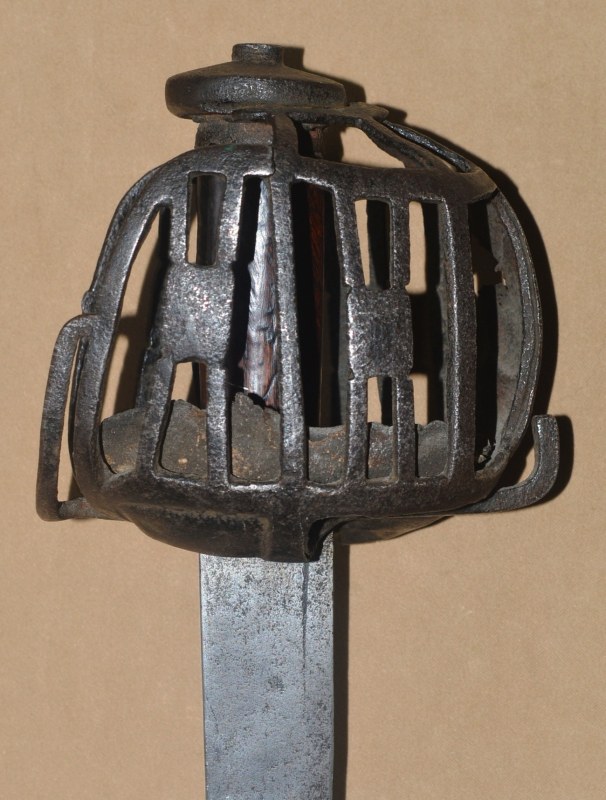









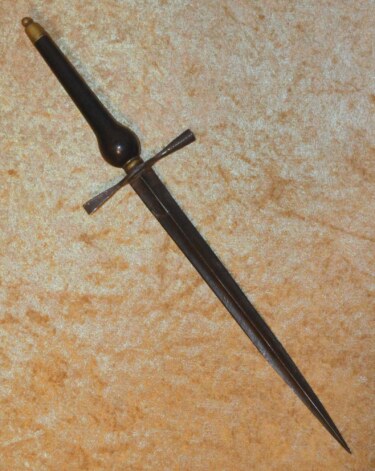 German Plug Bayonet with “Flint-Knapper” Quillons, Late 17th C
German Plug Bayonet with “Flint-Knapper” Quillons, Late 17th C 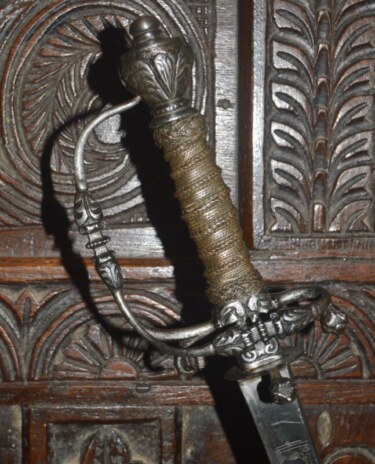 Exquisite Chiseled North European Rapier, ca. 1650
Exquisite Chiseled North European Rapier, ca. 1650 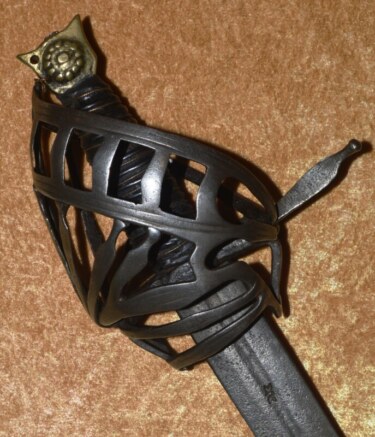 Venetian Schiavona Broadsword, Mid-17th C
Venetian Schiavona Broadsword, Mid-17th C 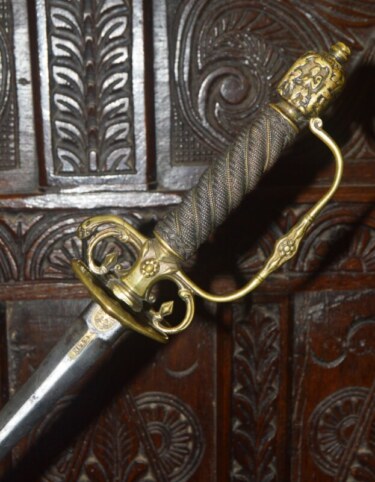 Fine German Transitional Rapier/Smallsword, Late 17th/early 18th C
Fine German Transitional Rapier/Smallsword, Late 17th/early 18th C